Gluten-free bread: A guide to choosing your flour
Which flour should you use for gluten-free bread?
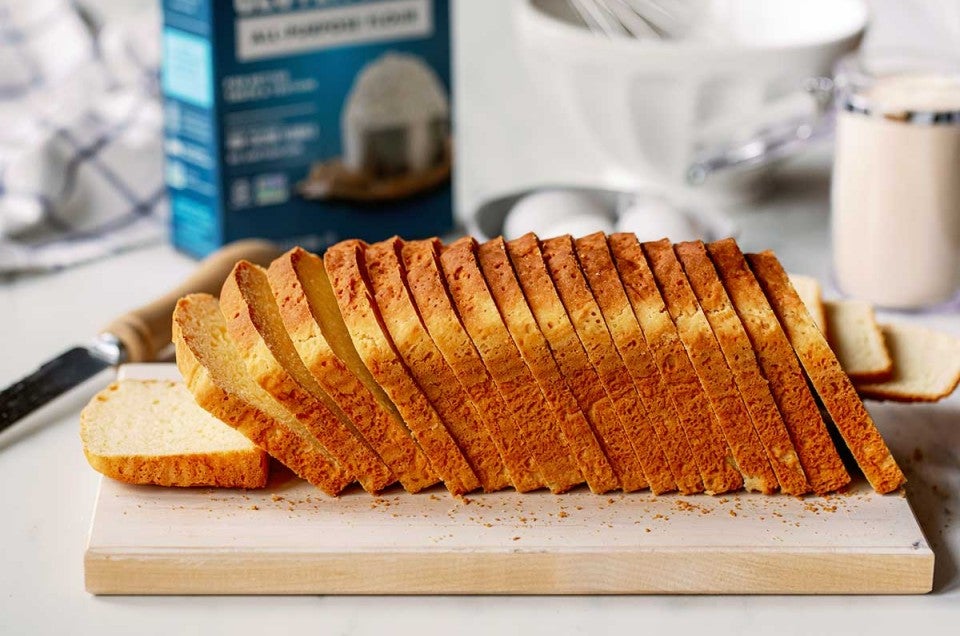

The landscape of gluten-free bread baking has changed drastically over the last few years, leaving bakers better off in some ways and more confused in others. You no longer have to hand-blend eight different flours and starches to bake a loaf of gluten-free bread. Phew! But now you need to select the right flour to use in your gluten-free bread recipe.
Why is gluten-free bread baking extra tricky? Because gluten is key to the structure of yeast bread.
In bread dough made with conventional wheat flour, gluten captures carbon dioxide given off by yeast — which makes the dough rise. Without gluten, something else must create an expandable yet strong structure that enables bread to rise — which is essential for a great loaf of bread.
Don’t fret! We’ve figured out how to make the very best gluten-free bread and other yeasted baked goods.
It comes down to two flours: our Gluten-Free All-Purpose Flour and our Gluten-Free Bread Flour. These are specifically formulated to make tender sandwich bread, airy pizza crust, and other products including yeast. They're the choice to reach for when you’re making almost any gluten-free bread recipe.
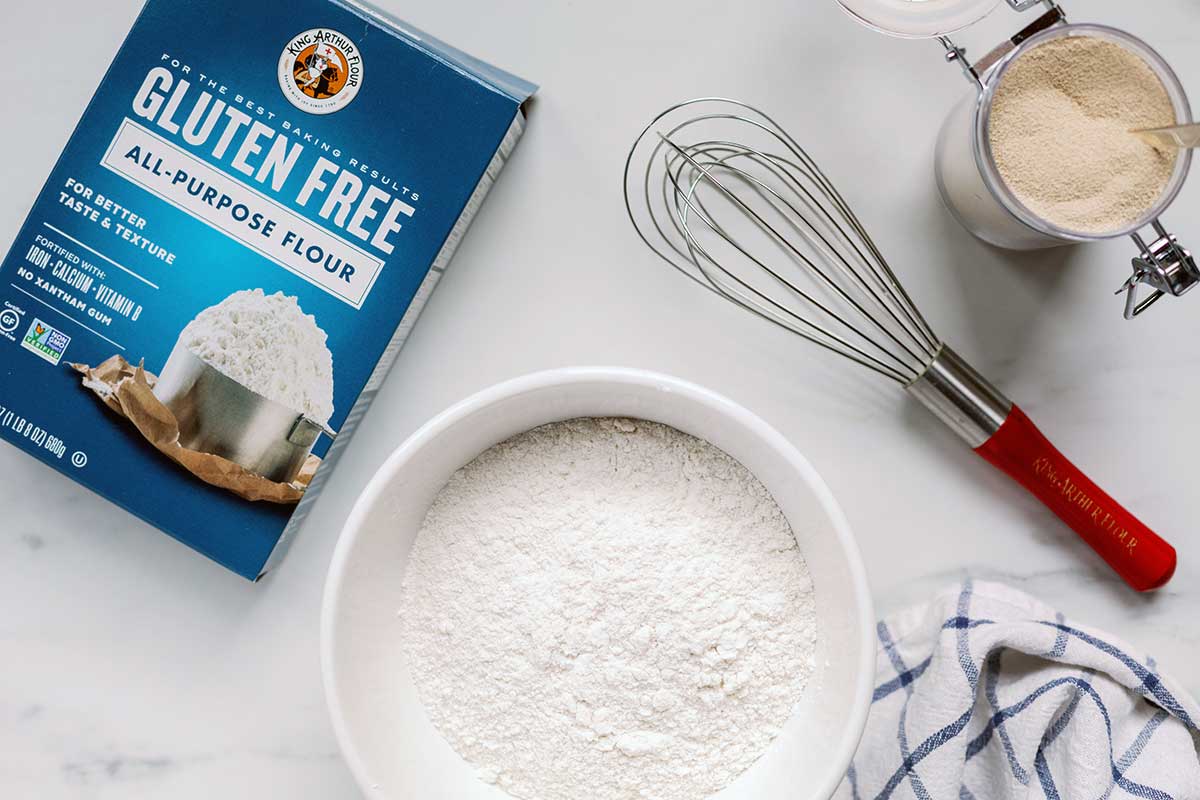
Let’s learn what makes these gluten-free flours special and how to make them shine in your gluten-free bread baking at home.
Part of the reason Gluten-Free All-Purpose Flour is a great choice for gluten-free bread baking is because it doesn't contain xanthan gum — which means the amount of xanthan gum you add in any particular recipe is up to you. (For those of you new to gluten-free baking, xanthan gum is a stabilizer that lends structure to gluten-free baked goods.) Adding your own xanthan gum to the recipe gives you more control over the final product, as is the case in this Gluten-Free Sandwich Bread recipe.
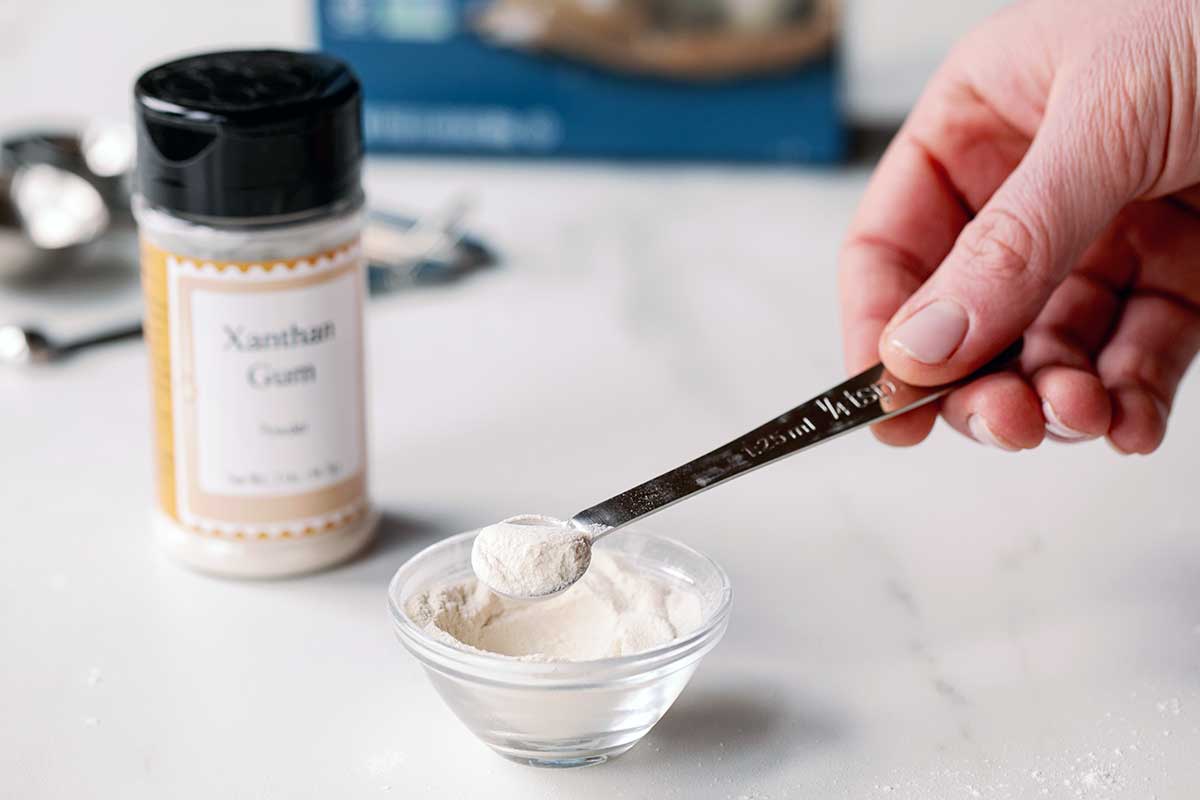
“Different baked goods require varying amounts of xanthan gum,” explains Frank Tegetoff, a member of our Research & Development team. Bread needs a higher ratio of a stabilizer (like xanthan gum) to flour than muffins, cake, or cookies. “The additional xanthan gum bulks up the structure of gluten-free yeasted dough,” says Frank. “It needs to be able to re-form after bulk fermentation.”
Frank’s referring to the two rises that bread dough typically goes through. The additional xanthan gum makes gluten-free bread dough slightly stretchy and allows it to capture carbon dioxide bubbles during bulk fermentation (the initial rise).
Once the dough is deflated and transferred to a bread pan, the xanthan structure breaks down. If you use a gluten-free flour with the xanthan gum already added, there may not be enough stabilizer to give the dough strength for a second rise. This leaves you with dense, low-rising bread.
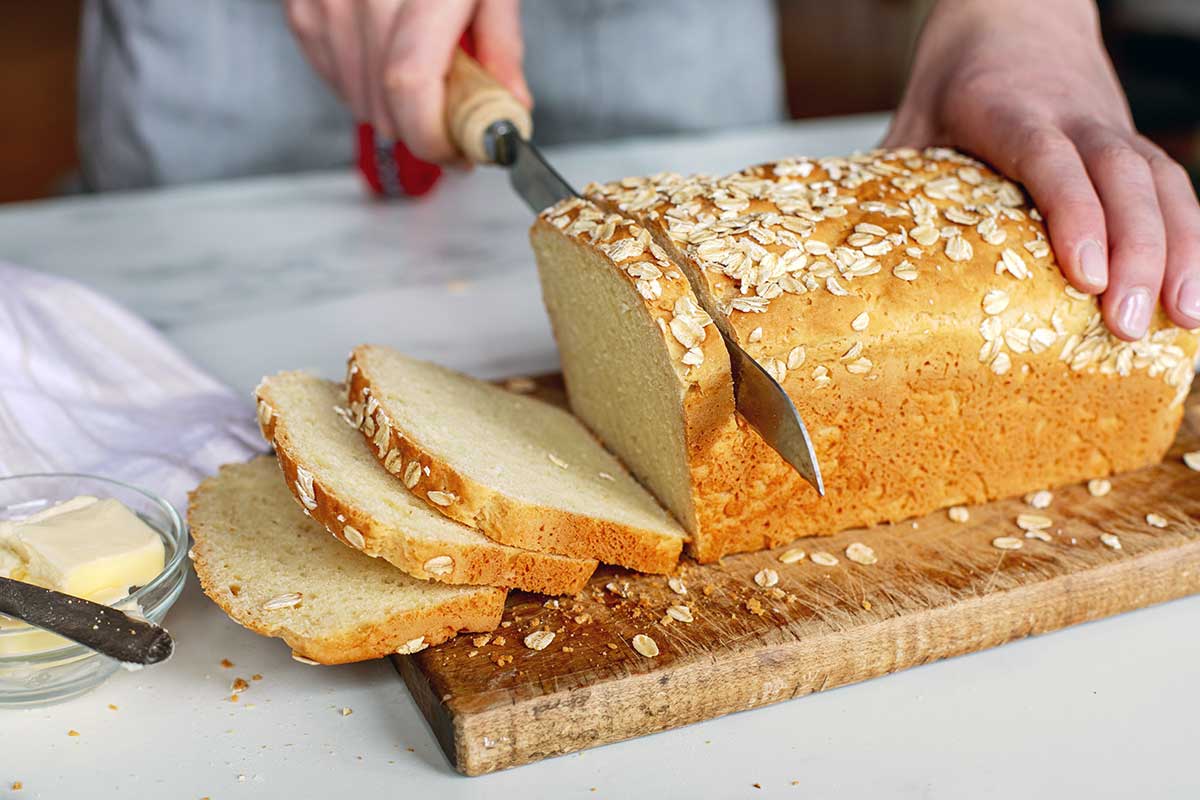
Frank tells me that right from the beginning, this flour was designed to be a multi-purpose flour. The Innovation Team set out to create a gluten-free flour that would make delightful sandwich bread as well as towering layer cakes (and more).
To ensure the best texture in all gluten-free baking, our Gluten-Free All-Purpose Flour is made from refined starches like white rice flour, tapioca starch, and potato starch. There’s none of the grittiness or heaviness that can come from unrefined flours. A bonus is the neutral flavor profile that accompanies these starches. “It’s very adaptable. It doesn’t overshadow the flavors you want to put in it,” says Frank.
These qualities are different from many gluten-free flours on the market, which often use a whole grain like sorghum as the primary ingredient. Whole grains tend to have stronger flavor in general, ranging from earthy to astringent. Aside from flavor, it’s also difficult to achieve the same tender texture (which you’re often looking for in sandwich bread) with unrefined flour.
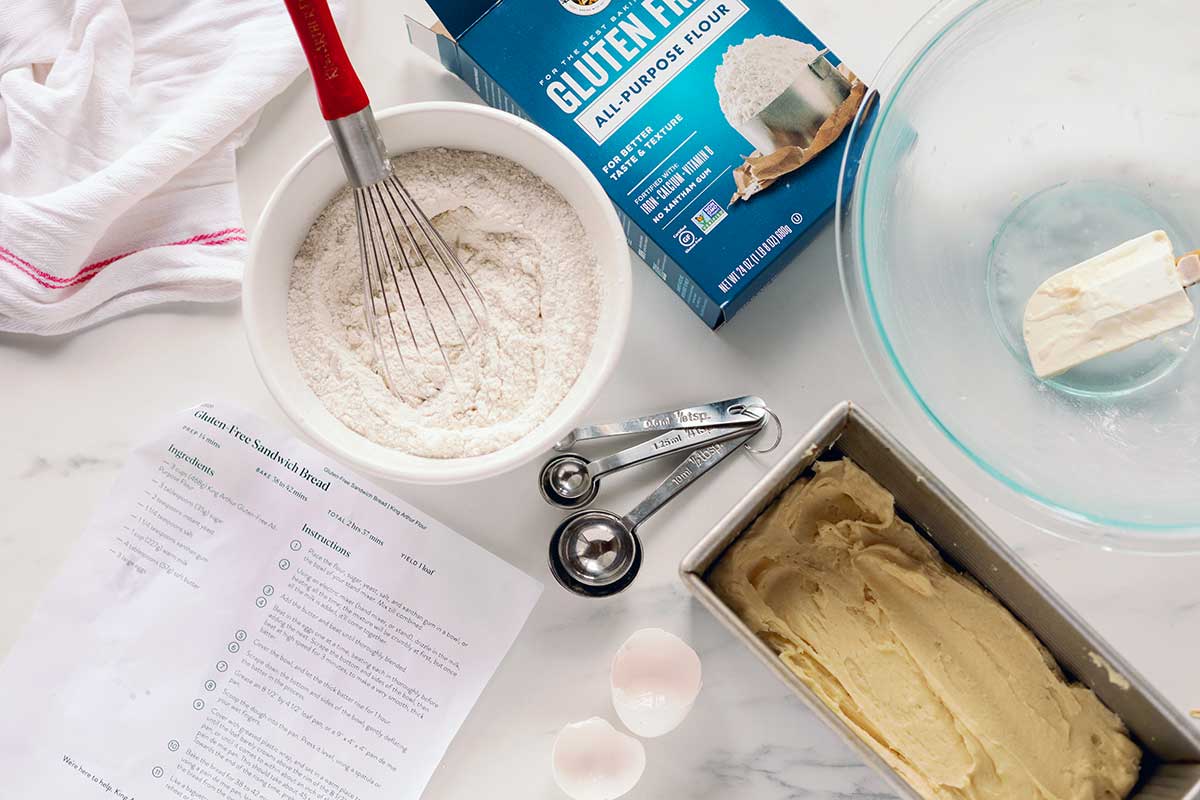
To recap, Gluten-Free All-Purpose Flour is ideal for gluten-free bread baking because you can control the amount of xanthan gum in your recipe, and the blend of refined starches offers a wide range of options, texture-wise.
Our Gluten-Free All-Purpose Flour can be used in any recipe that calls for gluten-free flour. Most recipes will also call for a stabilizer like xanthan gum. (We have a selection of recipes showcasing this flour on our website if you’re looking for a place to start.)
However, Frank cautions against trying to use Gluten-Free All-Purpose Flour as a substitute for the flour in standard recipes, even if you add xanthan gum. (We have another flour for that — more on that below!) He says, “The hydration of gluten-free recipes is totally different based on what you’re baking, plus you usually need extra eggs and fat, too.”
Take Frank’s advice: Unless you’re looking to embark on a trial-and-error experience, use our Gluten-Free All-Purpose Flour only in recipes that call for gluten-free flour.
A newer entry to our gluten-free flour lineup, Gluten-Free Bread Flour is specially formulated for gluten-free bread baking and meant to only be used in yeasted recipes. In addition to having xanthan gum already included, it also contains gluten-free wheat starch, which helps mimic the flavor of conventional flours and acts as a thickener — it even results in dough that can easily be shaped (and even braided, like challah).
While the starch undergoes rigorous testing to ensure it’s gluten-free, it’s not wheat-free, so if you have a wheat allergy, this flour is not suitable for you. (See more information on our product page.)
Unlike our Gluten-Free All-Purpose Flour, our newer Gluten-Free Bread Flour can we substituted for all-purpose or bread flour in your favorite bread recipes.
To do so, swap 1:1 by weight or volume. To start, Jonathan Brasil, another member of our Research & Development team, recommends trying one of our gluten-free bread recipes to get a feel for what the gluten-free version of that dough should feel like and how to knead it. For example, bake Buttery Gluten-Free Bread to experience dough for a sandwich loaf before swapping Gluten-Free Bread Flour into your favorite sandwich bread recipe.
But once you have your sea legs, you can feel free to substitute Gluten-Free Bread Flour into any bread recipe that calls for traditional bread (or all-purpose) flour; you’ll just need to make a few tweaks to the recipe, such as adding a few tablespoons extra liquid, letting the dough rest 20 minutes before kneading, and being prepared for faster proofing times. See full details in our blog post: How to substitute Gluten-Free Bread Flour for regular flour.
Don’t let the plethora of choices in the gluten-free flour category leave you feeling overwhelmed. Our Gluten-Free All-Purpose Flour will work in any recipe that calls for gluten-free flour and an added stabilizer (e.g. xanthan gum), even yeasted breads. Meanwhile, Gluten-Free Bread Flour can be used in any recipe that calls specifically for gluten-free bread flour or substituted for all-purpose or bread flour in your favorite bread recipes — see our product page for baker’s tips.
If you’re wondering which gluten-free flour to use when you’re not baking with yeast, our blog post, Which gluten-free flour should I use?, walks you through the decision-making process.
Thanks to Frank Tegethoff for sharing his knowledge and passion for our Gluten-Free All-Purpose Flour.
Thanks to Jenn Bakos for taking the photographs for this post.
Editor's note: This post was updated in May 2024 to better reflect our gluten-free bread flour offerings.